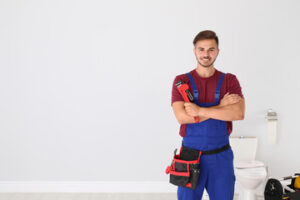Plumbing Plano is essential for any home or building to function properly. It ensures that clean water flows where it’s needed and waste is safely removed. Without efficient plumbing, daily routines become difficult. Properly maintained systems improve health and comfort.
Modern plumbing systems are designed to handle complex demands. They distribute water for drinking, cooking, and bathing. Wastewater is directed away to keep the environment clean. Skilled professionals ensure these systems work efficiently.
The design of plumbing systems involves both science and engineering. Pipes, valves, and fixtures must work together to regulate water flow. Pressure must remain consistent to avoid leaks or bursts. Regular maintenance helps prevent problems before they occur.
Water supply systems deliver fresh water from a source to various outlets. The network of pipes ensures water reaches kitchens, bathrooms, and outdoor areas. Backflow prevention devices keep the water clean and uncontaminated. Proper installation ensures durability and reliability.
Drainage systems are equally important for maintaining hygiene. They carry wastewater from sinks, toilets, and showers to a disposal system. Vent pipes allow gases to escape, preventing pressure buildup. Proper slope and pipe sizing ensure smooth drainage.
Hot water systems rely on heating mechanisms to provide comfort. Heated water flows through pipes to showers, sinks, and appliances. Insulated pipes help maintain temperature and prevent heat loss. Efficient systems reduce energy consumption and operating costs.
Plumbing systems also include gas lines for heating and cooking. These lines must be installed with precision to prevent leaks. Proper ventilation and shut-off valves increase safety. Professional handling ensures compliance with safety regulations.
Leaks and clogs are common plumbing issues that require quick attention. A small leak can lead to water damage and mold growth. Clogged drains can cause backups and unpleasant odors. Routine inspections help catch these issues early.
Pipe materials play a crucial role in the durability of a plumbing system. Metal pipes resist corrosion but can be expensive. Plastic pipes are lightweight and flexible but may degrade under certain conditions. Choosing the right material ensures long-term performance.
Pressure regulation is essential for maintaining a balanced flow. High pressure can damage fixtures and increase water waste. Low pressure can result in weak flow and poor performance. Pressure-reducing valves help maintain stability.
Water conservation is a growing priority in modern plumbing. Low-flow fixtures reduce water consumption without sacrificing performance. Dual-flush toilets and sensor faucets help minimize waste. Efficient plumbing design supports sustainable living.
Plumbing systems must be designed to handle varying environmental conditions. Freezing temperatures can cause pipes to burst if not properly insulated. Excessive heat can weaken pipe joints and connections. Adaptive materials and installation methods prevent damage.
Plumbing codes and standards ensure safety and efficiency. Professionals follow these guidelines to maintain compliance. Inspections verify that systems meet performance and safety requirements. Adhering to codes helps avoid costly repairs and legal issues.
Emergency plumbing services are crucial for unexpected issues. Burst pipes, gas leaks, and sewage backups require immediate attention. Professionals use specialized tools and techniques to resolve problems quickly. Fast response prevents further damage and inconvenience.
Plumbing technology continues to evolve with innovative solutions. Smart leak detectors alert homeowners to hidden issues. Water filtration systems improve taste and quality. Touchless fixtures enhance hygiene and convenience.
Plumbing maintenance involves regular inspections and cleaning. Pipe joints and valves need to be checked for wear and tear. Drain cleaning prevents buildup and blockages. Professional maintenance extends the lifespan of plumbing systems.
Homeowners can handle minor plumbing repairs with basic tools. Replacing washers, tightening connections, and clearing minor clogs are simple tasks. More complex issues, like pipe replacements, require professional expertise. Knowing when to call a plumber prevents further damage.
Plumbing problems can lead to structural damage if left unchecked. Water leaks weaken walls, ceilings, and floors. Mold and mildew growth affect indoor air quality. Early detection and repair protect the integrity of the building.
Plumbing systems in commercial buildings are larger and more complex. Multiple floors and high water usage require advanced design. Pressure boosters and large drainage pipes accommodate demand. Regular maintenance ensures consistent performance.
Green plumbing solutions focus on reducing environmental impact. Rainwater harvesting systems collect and store water for non-drinking uses. Greywater recycling systems repurpose wastewater for irrigation. Eco-friendly materials and designs support sustainability.
Professional plumbers undergo training to handle various challenges. They learn about different pipe materials, pressure systems, and installation methods. Licensing and certification ensure they meet industry standards. Experienced plumbers provide reliable service and advice.
Plumbing upgrades can improve efficiency and convenience. Installing new fixtures enhances water flow and aesthetics. Replacing old pipes reduces the risk of leaks and corrosion. Modern solutions increase property value and comfort.
Plumbing repairs should address both visible and hidden issues. Fixing a leak at the surface may not resolve deeper pipe damage. Camera inspections help identify internal problems. Comprehensive repairs ensure long-lasting performance.
Seasonal changes affect plumbing systems in different ways. Cold weather increases the risk of frozen pipes and cracks. Summer heat can cause expansion and loosening of joints. Preparing systems for seasonal changes prevents damage.
Water pressure adjustments can resolve performance issues. Installing a booster pump increases flow for multi-story buildings. Pressure relief valves prevent damage from excessive pressure. Balanced pressure ensures consistent operation.
Plumbing inspections should be scheduled annually. Professionals check for leaks, corrosion, and weak joints. Early detection of issues reduces repair costs. Preventive maintenance ensures reliable performance.
Plumbing emergencies require quick thinking and proper tools. Shutting off the main water valve minimizes damage. Plungers, wrenches, and pipe tape help manage minor issues. Professional backup ensures thorough repairs.
Plumbing involves a combination of installation, maintenance, and repair. It supports the daily needs of households and businesses. Efficient systems enhance comfort and health. Investing in quality plumbing ensures long-term reliability and performance.




